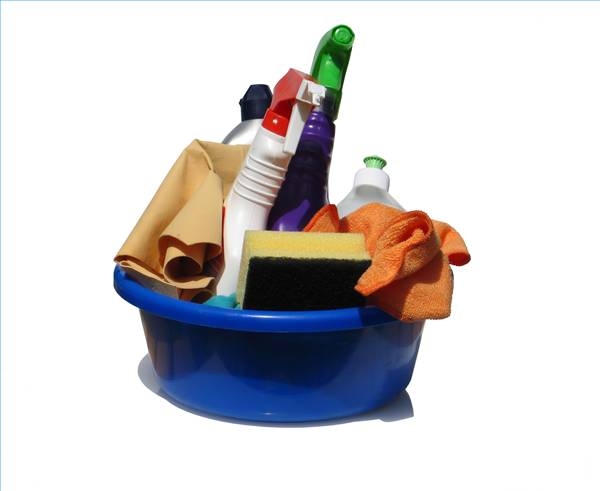
It is common for an RV to have a rubber roof. This nice feature keeps the water out, but it does need regular cleaning. Check your warranty for more details because some may require you to clean the rubber roofs 4 times a year or it could void the coverage. These roofs can last several years with proper care.
Remember to be very careful when cleaning an RV rubber roof. It can be very dangerous work and requires your full attention. Do not clean the roof if there are any storms in the area. You do not want to be standing on top of your RV when there may be rain or lightning. Use the ladder on your RV or carefully place an extension ladder up against it. Make sure you extend the ladder at least 2 feet beyond the top of the RV. It helps to hold on to it when getting on the roof, but it really assists when you want to get off of it. Wear shoes that are not slippery on wet surfaces. Use long pieces of board or special racks to move across the roof if there are any weak spots. Try to step on the main supports of the roof when possible. Always be aware of the edge of the RV. You can easily slip off and be seriously hurt.
Follow any specific directions stated in the warranty of your RV rubber roof. Remove any leaves or other debris from the roof with a broom. Check the roof thoroughly for any signs of leaks or wear. Inspect all areas closely around seams, vents or other openings in the roof. Repair these using specifically produced products before you clean it. Obtain any specific cleaner (or cleaners with protectors included) suggested by the manufacturer or use a mild one like dish soap that does not contain citrus ingredients, harsh abrasives or petroleum solvents. Add the detergent to water in a spray bottle for easy application. Spray small areas at a time; use a medium bristle brush on a long handle to scrub and then rinse. Make sure you wet the sides of the RV before rinsing the roof to stop streaking. Utilize a power washer, but be extremely careful not to use too much force, or use a water hose for rinsing. Use a separate protector/sealant as directed, if recommended or desired for further rubber roof protection. Clean the sides after you finish the roof, or at least rinse thoroughly.